 | TODAY IN SCIENCE HISTORY NEWSLETTER - 19 FEBRUARY |
| Feature for Today |
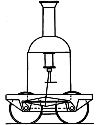 On 19 Feb of a certain year - which is a question in the quiz below - a trial run of an early American-built locomotive took place.* The designer was Philias Davis, of York, Pennsyvania - hence its name: the York locomotive. He was aiming at the prize offered by the Baltimore and Ohio Railroad for a practical locomotive. The company knew that Peter Cooper's experimental Tom Thumb locomotive had earlier successfully shown how to harness the power of steam. Now the company wanted a practical locomotive for passenger service on their railroad. On 19 Feb of a certain year - which is a question in the quiz below - a trial run of an early American-built locomotive took place.* The designer was Philias Davis, of York, Pennsyvania - hence its name: the York locomotive. He was aiming at the prize offered by the Baltimore and Ohio Railroad for a practical locomotive. The company knew that Peter Cooper's experimental Tom Thumb locomotive had earlier successfully shown how to harness the power of steam. Now the company wanted a practical locomotive for passenger service on their railroad.Read this book extract for more information on Phineas Davis, and learn of yet another ingenious man, what background he had to pioneer as an inventor, and where that success took him. * The reference for this date is Kane's Famous First Facts. Webmaster seeks a primary source to verify that date - please forward that information if you know it. |
| Book of the Day | |
| |
| Quotations for Today | |
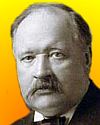 | "Humanity stands ... before a great problem of finding new raw materials and new sources of energy that shall never become exhausted. In the meantime we must not waste what we have, but must leave as much as possible for coming generations" |
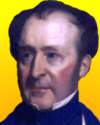 | "Physical geography and geology are inseparable scientific twins." |
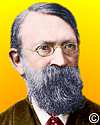 | "Physics is experience, arranged in economical order." |
| QUIZ | |
| Before you look at today's web page, see if you can answer some of these questions about the events that happened on this day. Some of the names are very familiar. Others will likely stump you. Tickle your curiosity with these questions, then check your answers on today's web page. | |
| Births | |
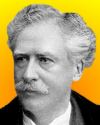 |  Herman Snellen, born 19 Feb 1834, was a Dutch ophthalmologist whose Snellen Chart imprinted with lines of square shaped black letters is used for testing visual acuity. He is also remembered by his name for the "Snellen fraction." Herman Snellen, born 19 Feb 1834, was a Dutch ophthalmologist whose Snellen Chart imprinted with lines of square shaped black letters is used for testing visual acuity. He is also remembered by his name for the "Snellen fraction."  What is the "Snellen fraction"? What is the "Snellen fraction"? |
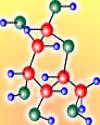 |  Gottlieb Sigismund Kirchhof, born 19 Feb 1764, was German-Russian chemist who discovered the commonest simple sugar, a smaller molecule derived from the hydrolysis of the large starch molecule (1811) using sulphuric acid. Gottlieb Sigismund Kirchhof, born 19 Feb 1764, was German-Russian chemist who discovered the commonest simple sugar, a smaller molecule derived from the hydrolysis of the large starch molecule (1811) using sulphuric acid.  What is the simplest sugar? What is the simplest sugar? |
| Deaths | |
 |  Ernst Mach (1838-1916) was a physicist who established important principles of optics, mechanics, and wave dynamics as well as the Mach number. He died one day after his 85th birthday. Ernst Mach (1838-1916) was a physicist who established important principles of optics, mechanics, and wave dynamics as well as the Mach number. He died one day after his 85th birthday.  Ernst Mach was of what nationality? Ernst Mach was of what nationality? |
| Events | |
  |  On 19 Feb of a certain year, the first practical US coal-burning locomotive, the York, made its first trial run in Pennsylvania. On 19 Feb of a certain year, the first practical US coal-burning locomotive, the York, made its first trial run in Pennsylvania.  In which decade was this trial run made? In which decade was this trial run made? |
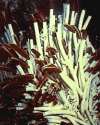 |  On 19 Feb 1977, deep-ocean researchers in the research submersible Alvin found extraordinary extremophile life forms. New types of worms, clams and crabs were seen thriving around geothermal hot water vents on the Pacific Ocean floor off the Galapagos Islands. The food-chain of the ecosystem depends upon bacteria oxidizing a certain volcanic gas that spewed out of the hot springs. On 19 Feb 1977, deep-ocean researchers in the research submersible Alvin found extraordinary extremophile life forms. New types of worms, clams and crabs were seen thriving around geothermal hot water vents on the Pacific Ocean floor off the Galapagos Islands. The food-chain of the ecosystem depends upon bacteria oxidizing a certain volcanic gas that spewed out of the hot springs.  What is this gas? What is this gas? |
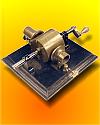 |  On 19 Feb 1878, the phonograph was patented by Thomas A. Edison. His first recording was made reciting into a large horn which transmitted vibrations to a needle which scribed a recording on a cylinder rotated by hand. On 19 Feb 1878, the phonograph was patented by Thomas A. Edison. His first recording was made reciting into a large horn which transmitted vibrations to a needle which scribed a recording on a cylinder rotated by hand.  What words did Edison use for his first recording? What words did Edison use for his first recording? |
| Answers |
When you have your answers ready to all the questions above, you'll find all the information to check them, and more, on the February 19 web page of Today in Science History. Or, try this link first for just the brief answers. Fast answers for the previous newsletter for February 18: Ernst Mach; zinc; Los Alamos; the decade including the year 1930; isotope. |
| Feedback |
 If you enjoy this newsletter, the website, or wish to offer encouragement or ideas, please send feedback by using your mail reader Reply button. If you enjoy this newsletter, the website, or wish to offer encouragement or ideas, please send feedback by using your mail reader Reply button. |
--
If you do not want to receive any more newsletters, this link
To update your preferences and to unsubscribe visit this link
If you do not want to receive any more newsletters, this link
To update your preferences and to unsubscribe visit this link
! !



Δεν υπάρχουν σχόλια:
Δημοσίευση σχολίου